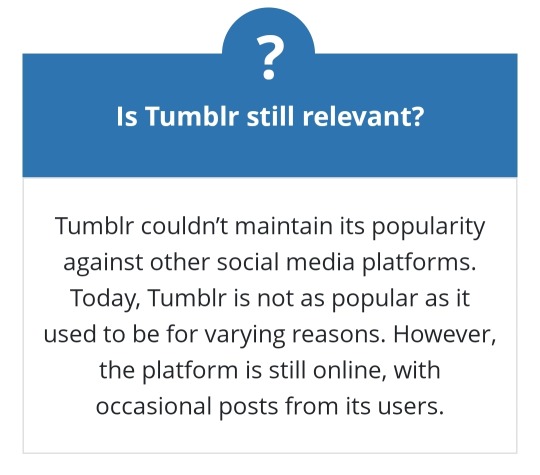Text
important to know if you are visiting people in China (if you're not sure what is an appropriate gift, ask a Chinese friend)
these are not strictly enforced but such traditions are why the Chinese community and Chinese nation are so cohesive
23 notes
·
View notes
Text

為了您的安全,請勿踩踏馬桶
18 notes
·
View notes
Text


Super long character practice: biáng and huáng
The first is often considered the character with the most strokes and refers to a type of noodle (biangbiang mian).
The second has more strokes but isn’t really a word. It’s considered an artistic representation of heaven, in character form.
I feel like biáng was actually possible to get somewhat decent, but huáng was just incredibly difficult to get the spacing right 😂
55 notes
·
View notes
Text
Every wanted to tell someone to step on a lego in Mandarin? Here's how:
我希望你踩在乐高上。「我希望你踩在樂高上。」
(I've also seen 踩到樂高)
A favorite variation is 我希望你在漆黑的夜里一脚踩上乐高,光脚!「我希望你在漆黑的夜裡一腳踩上樂高,光腳!」
56 notes
·
View notes
Text
Try on some of the most popular false eyelashes by 笑饼啊
#listening practice level hard#reblog#video#douyin#beauty products#eyelashes#chinese language#chinese langblr#mandarin#中文#langblr
251 notes
·
View notes
Text

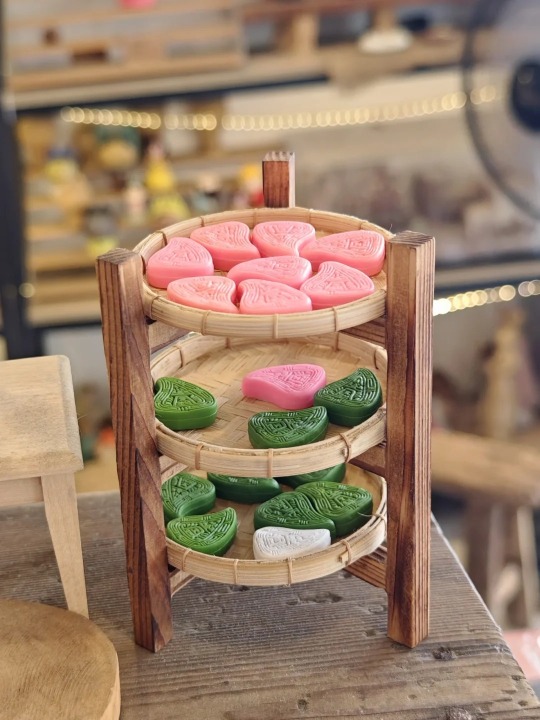
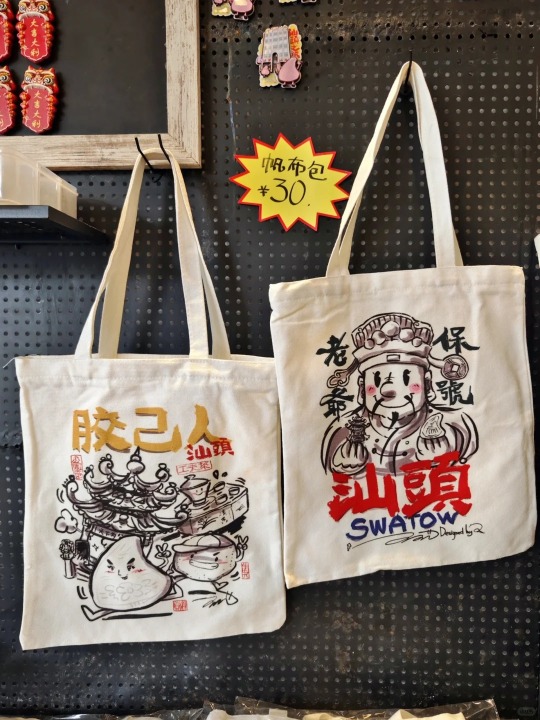
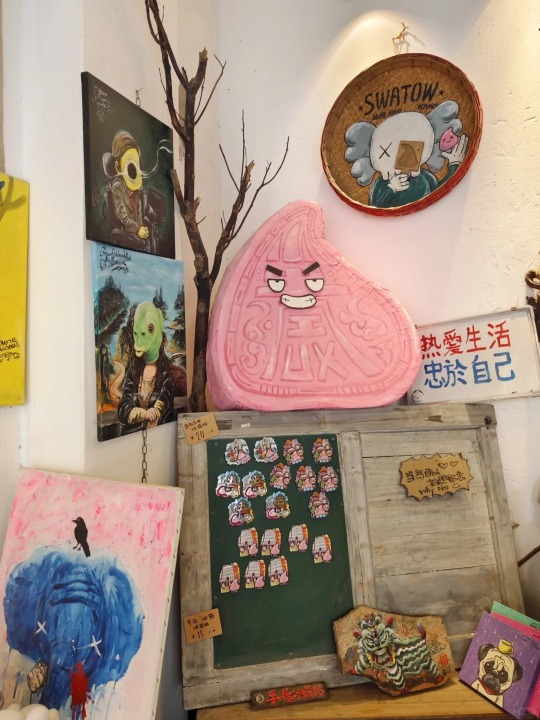

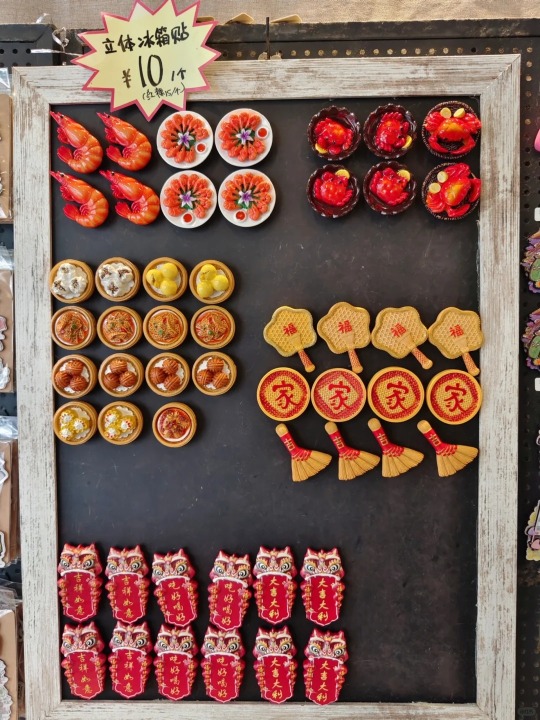
A gift shop called Yòuyì Yuánchuàng (又藝原創) in Shantou, Guangdong province. Shantou is a part of the Chaoshan cultural region and the store sells Chaoshan-inspired souvenirs. The pn̄g-thô-kóe (飯桃粿) or hóng táo guǒ (紅桃粿) which roughly translates to "red peach cake" (though it is more similar to a stuffed dumpling) is an iconic dish of Chaoshan cuisine and features prominently at the store. The pn̄g-thô-kóe has become a symbol of Chaoshan as you can find souvenirs based on the dish all across the region.
Stores like this in China are called wénchuàng diàn (文創店) or 'cultural and creative stores' which typically refers to establishments that specialize in selling unique, artistic, or culturally significant products such as handmade crafts, art pieces, traditional cultural items, creative designs, and so on. They cater to consumers interested in cultural and artistic products and often promote local or traditional culture alongside contemporary creativity.
Images by 市民小林
93 notes
·
View notes
Text
[Book Rec + Reaction/Thoughts] The Lantern and the Night Moths 灯与夜蛾 by Yilin Wang
An anthology of translated poems by five modern or contemporary poets and accompanying essays by the translator, @yilinwriter.
The cover art, a beautiful expression of the tone of this collection, is by Taiwanese artist Ciaoyin (check out her gorgeous insta!). I'm looking forward to the arrival of the physical book as my tab absolutely does not do it justice xD

Anyway! The official release date is 02 April 2024 though there have been some very thoughtful reviews by early readers already. Here, here and here.
(It was an ARC that I received too… though in the time it took to put this together, the ebooks have already gone out to readers >.< typical snail yj!)
Instead, I’ll tell you who I think would be be interested in this book or might benefit from reading it, then share things that are cool about it from the perspective of a bilingual hobbyist translator + lover of ancient poetry and lyrics.
Who should read it?
If annotations, translator’s notes and reflections spark joy for you...
If you’ve ever read poetry translations and been intensely curious about what goes on under the hood...
If you’re a translator yourself wanting to hear another voice...
Definitely check this out!
Also if you’re CN+EN bilingual and have ever read something in English that references Chinese terms and concepts etc. except ONLY in English, pinyin or wade-giles and been utterly frustrated by the ensuing guessing game (like me) Fear Not.
That will not be a problem here.
I really appreciate how Chinese words are used naturally where needed for concepts and quotes - they are also translated for those who can't read Chinese so no one is left out. It made this book of and about translation (and more) super comfortable to read! The solution is so simple, so direct, so rarely used that I am amused.
Oh, but do note that the Chinese characters are in simplified though!
The poems are organised by their writers who are listed here by order of birth year, not appearance in the book:
秋瑾 (Qiu Jin, 1875 to 1907)
废名 (Fei Ming. 1901 to 1967)
戴望舒 (Dai Wangshu, 1905 to 1950)
小西 (Xiao Xi, 1974 to _)
张巧慧 (Zhang Qiaohui, 1978 to _)
Altogether, that covers nearly the last 150 years up to now. I’ve never really been into poetry by poets in such relatively recent times, in part because I’d been holding on to this stereotype of them spurning Classical Chinese and ancient poetry in the first half of the 20th century (not entirely true, as I came to realise xD). It made sense and was understandable, but felt sad.
Yet am I the target audience for this book?
Very much so.
In ways I didn’t think I would be too! It was so much fun to experience this both as a reader and a translator that I thought I’d share it here, where we are appreciating Chinese poetry together.
If you didn’t think you’d enjoy modern Chinese poetry, hey, give it a chance!
Oh yeah - on the way home a while back, I was talking to a friend about translation and was surprised to hear that her impression was that it ought to be a straightforward process. Like isn’t it a 1:1 conversion? At some point, ‘what’s the difference between something google translate might return, and how you would say it?’ was asked, and oh that was a delightful question to my ears! I showed her one of my comparison sheets where an original text is laid out alongside multiple translations line-by-line, briefly explaining some common and unique choices and how the people who had translated those probably arrived at the various interpretations. She was pretty amazed to see that the answer to her question was: very different. Hey, it’s a complicated process!
But there’s only so much one can explain in the space of a train ride. That’s why The Lantern and the Night Moths is a book I would also rec to someone like this friend of mine - open minded and curious but never having the chance to think about or encounter the craft of translation.
Like Yilin says, ‘the meaning of a word cannot be fully expressed in one single translation, nor through a series of translation attempts’. She then explains why with great attention to detail and some solid examples from one of the poems with word choices loaded with subtle connotations :D
What's interesting about it?
Okay, for one, Yilin shared a playlist of music that she listened to while working on this book. Here is the link to the spotify one and the one on youtube. Check them out! They sure put me in the mood to read xD (favs: 别知己, 小神仙 & 去有風的地方) Afterwards, this made so much sense like - ah! an audio moodboard.
She's also putting together these adorable mini profiles of each poet along with a cmedia and tea rec to match their vibes. Check them out on her instagram xD
Now to business...
structure
What really helped keep the reader’s focus was the way each section is organized, how the poems and accompanying essay were presented and finally the short bio of each person right at the end.
The poets are first introduced through five or six of their poems. These works are well chosen. Their voices distinct through the vision, ambition and emotion of their words, are brought across by Yilin’s sensitive, thoughtful and poetic translations into English. These translations were also creative and transformative in a way that made so much sense after reading one of her reflections on the process, how she ‘must guide it with gentle hands to ensure its spirit is kept alive and intact during this transformative, and often excruciating process’. A rebirth into another language!
Personally, I’ve come to think of reading translations as looking at a work through another’s eyes. So it’s delightful when the translator’s presence is discernible, and even more so when the reader is given insight into their intention and process via commentary.
Yilin’s essays coupled with the poets’ bios at the end provide a means to go back and appreciate their works in context of their circumstance and inspirations. Similarly, to read the translations with a changed perspective.
I don’t know how much of a thing this is with translated poetry anthologies in English - can count the number I’ve read with both hands lol, and they’re all of the ancient chinese poetry variety - but I really like this design.
drawing on poets who came before them
Remember how we’re always recognizing traces of inspiration from ancient works (to them) in poetry of the various dynasties? 李商隐 Li Shangyin of Tang for example, was influenced by 楚辞 Verses of Chu and folklore and mythology such as that in 山海经 Classic of Mountains and Seas, 李白 Li Bai frequently references poets and history of the 魏晋 Wei-Jin era, and 王维 Wang Wei was clearly familiar with Buddhist scriptures which were translations themselves!
Just like the late Táng poets whom he praised for boldly deviating from the voices before them, Fei Ming used popular references and tropey shorthands ‘in contexts utterly different from the original, reimagining them anew’. Dai Wangshu, too, ‘boldly re-envisioned what modern poetry could look like by revisiting the classics’. In fact, in his very relatable ‘To Answer the Visitor with Classical Imagery’, I see Li Bai’s 春夜宴桃李园序, Qu Yuan’s 离骚 and lots of - as the title says - classical imagery, as if pulling out painting after painting to describe a feeling.
And it’s Dai Wangshu’s faith in the translatability of poetry, that ‘poetry isn’t what is lost in translation, but rather, what survives it’ reminds me of what a friend, @xiakeponz, said that I agree with so much - because readers can ‘experience something in their own individual way through (your) shared humanity rather than language alone’.
Qiu Jin
So many FEELINGS about what Qiu Jin was doing - ‘I awaken the spirits of women, hundreds of flowers, abloom’. I would love if she could see the world now. So many things for her to rouse and fight against, but at the same time just as many to be proud of. I am so in awe of her, but now hearing her loneliness and struggle there is a soft spot in my heart for those too.
conclusion
So so so…
Qiu Jin’s admirable fire and lonely resolve. Zhang Qiaohui’s precious ability to express beauty in the mundane and in pain. Fei Ming’s utter delight! He is having so much fun and when* I’m vibing, I feel it too. Xiao Xi’s critical eye and keen observation of the world. Dai Wangshu’s whimsical charm and passion for translation. Finally, Yilin Wang, the connecting thread wound through them all, bringing them together so that we may be acquainted.
*Reading his poetry is like unwrapping a seamless, many layered present. A gift that keeps giving - if only you have a key 😅 Fortunately, Yilin has halved our struggle 🤣
I’ve had such a great time with them all. And if you come, I hope you will too!
28 notes
·
View notes
Text
Journey to HSK 4 | 路行到HSK四级

2020年7月4日 - 我以前忘了写了第八课的注释!这就是。
HSK四级第八课注释
使
To make, to cause (somebody to do something or something to happen)
similar to 让
used in writing more often than in speaking
例如:吃了很多肉和由使我的肚子疼死了!
只要
as long as…provided…. structure
used along with 就: 只要。。。就。。。
例如:只要你努力学习就能使水平提高了。
可不是
Exactly! That’s just the way it is
Used to agree with another person’s statement
Acts like an exclamation, can stand alone or omit 是
例如:
A:你不是安排了我的生日派对吗?
B:可不是!我怎么忘了这么重要的日子呢?
因此
Because of this; so; therefore
Cannot pair with 因为
例如:现在世界上通过了大流行了。因此,我们的婚礼后会无期了。
往往
Adverb that indicates something happens frequently under specific circumstances; “regular”
Differs from 经常, “often,” which does not imply regularity, but could express wishes or events that have not yet happened, whereas 往往 can only talk about the past up to the present
例如:我妈往往早起就去跑步。
16 notes
·
View notes
Text
I'd been stressing myself out doing old practice tests that have 50 questions with a 60 minute time limit, when I stopped to consider that I'm taking the TOCFL CAT. Says the official website:
"The TOCFL Computerized Adaptive Test (Listening and Reading) employs Rasch model of item response theory. The test taker does not need to choose the test level or band when registering for the test. The computer selects the test items based on the test taker’s response to the previous items. Compared with other test formats, CAT takes less test items to precisely evaluate the test takers’ competence, as the item selection is adapted by the test takers’ responses." There are actually only about 35 questions per section. Excellent, I thought to myself. I decided to try the CAT practice test (there's no pausing, so if you want to try make sure you have a couple hours free, it gives you a score immediately at the end. There are traditional and simplified versions!)
It was very difficult. I got a lot of questions that were definitely from Band C, which I did not enjoy! Please leave me in my comfort zone in peace! (If there were actually 50 questions I would have given up and started clicking random answers.) I did get Level 4 (B2) at the end, which was my goal, so I can only hope the practice test is more or less on par with the real one.
However, the real gratifying thing was that looking up the bathroom wall graffiti the other day really paid off because there was a whole listening passage on ketamine.
#reblog#chinese proficiency test#tocfl#tocfl cat#chinese langblr#chinese language#langblr#mandarin#中文
20 notes
·
View notes
Text

Some vocabulary from the last lesson from level 6 (HSK4) in SuperChinese
#oops#typo noticed 3 days later#personal#studyblr#langblr#chinese langblr#chinese language#mandarin#中文
29 notes
·
View notes
Photo

Lijiang, 2019
842 notes
·
View notes
Text

Path to perfection ❤️
47 notes
·
View notes
Text
Reminders from Tianjin Fire & Rescue

English added by me :)
1K notes
·
View notes
Text
the story of how Feng Xin ended up with the name Ju Yang (big D) reminds me of the story of why Chinese people hang the character that means “blessing” (福)upside down on their doors during Chinese New Year.
one version of it is:
On the eve of the Spring Festival during the reign of Emperor Xianfeng of the Qing Dynasty, the chief steward of the Prince Gong's mansion, aiming to please his master, wrote several large "福" (blessing) characters to be posted on the storeroom and the mansion's main gate. However, one of the servants, being illiterate, accidentally posted the "福" character upside down on the main gate. This greatly annoyed the prince's consort (wife), who wanted to punish the servant with a whipping. Fortunately, the chief steward was a persuasive and eloquent speaker. Fearing the consort would blame him and affect his own standing, he quickly knelt down and explained: "I have often heard people say that Prince Gong has a long life and great fortune. Now that the '福' has 'arrived' (which is a homophone to “being upside down”), it is a sign of good luck." Upon hearing this, the prince's consort went from anger to joy, thinking: "No wonder passersby have been saying that Prince Gong's fortune has 'arrived.' A saying repeated a thousand times can bring wealth in gold and silver. An ordinary servant couldn't have thought of this!" Consequently, she rewarded both the steward and the servant with 50 taels of silver each. Later on, the custom of posting the "福" character upside down spread from the mansions of officials to the homes of ordinary people, hoping that passersby or mischievous children would chant "The fortune has arrived! The fortune has turned arrived!" for good luck.

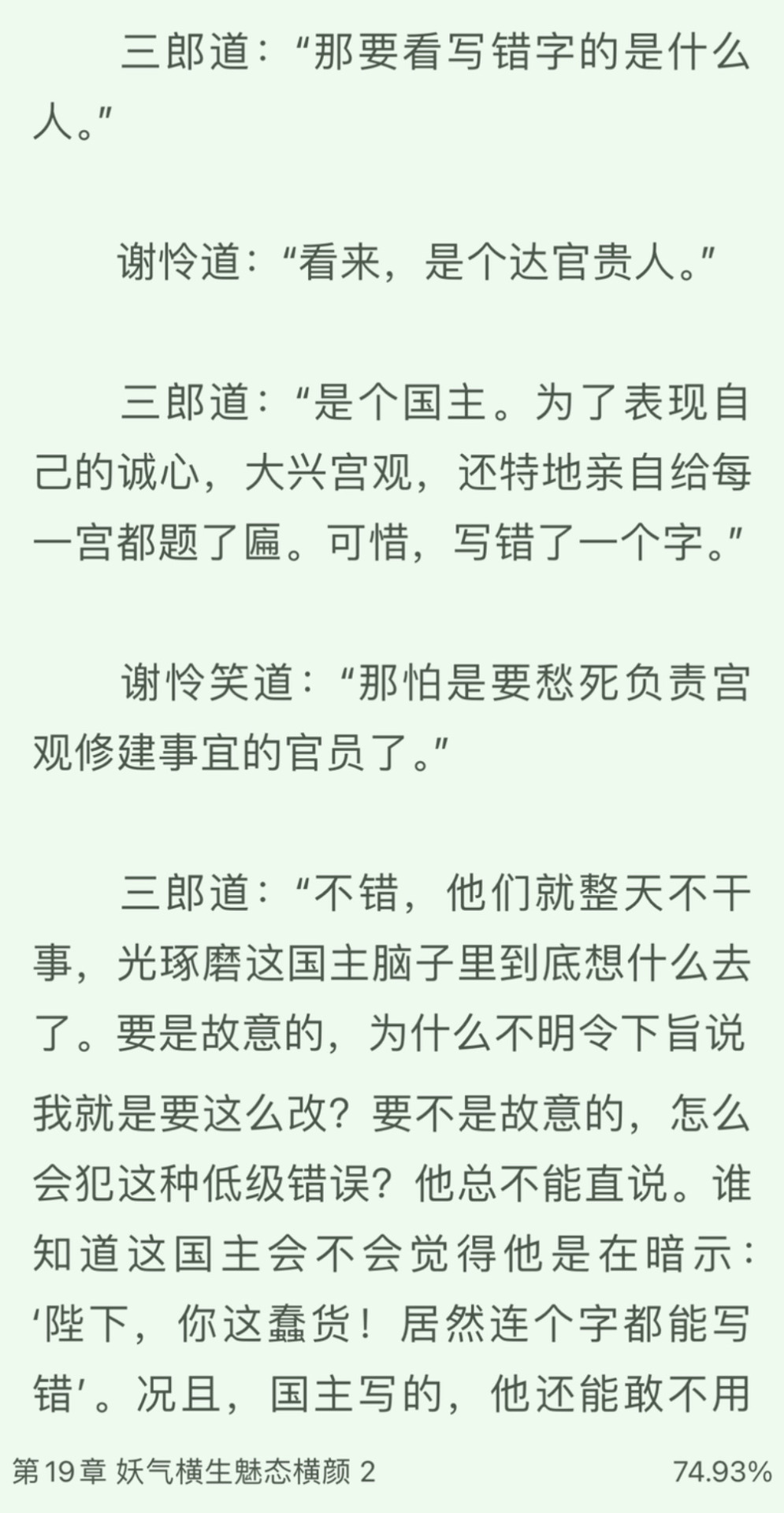
74 notes
·
View notes
Text
Hundreds of people are about to board a flotilla and deliver urgent humanitarian relief to Gaza. Please share this video and follow Gaza Freedom Flotilla. The more people watching, the safer the participants.
7K notes
·
View notes
Text
i hate this weird trend in fandom where subtext is seen as a Bad Thing and is only done if the creators are too cowardly to commit to showing something. i hate to break it to you but nuance and layers are what make stories interesting, if you have no subtext then you have a very flat story
#THIS!#thank you#subtext rules#interpretation is fun#when everything is clear there isn't much to think and talk about#and it feels like the writers underestimate my intelligence
35K notes
·
View notes

